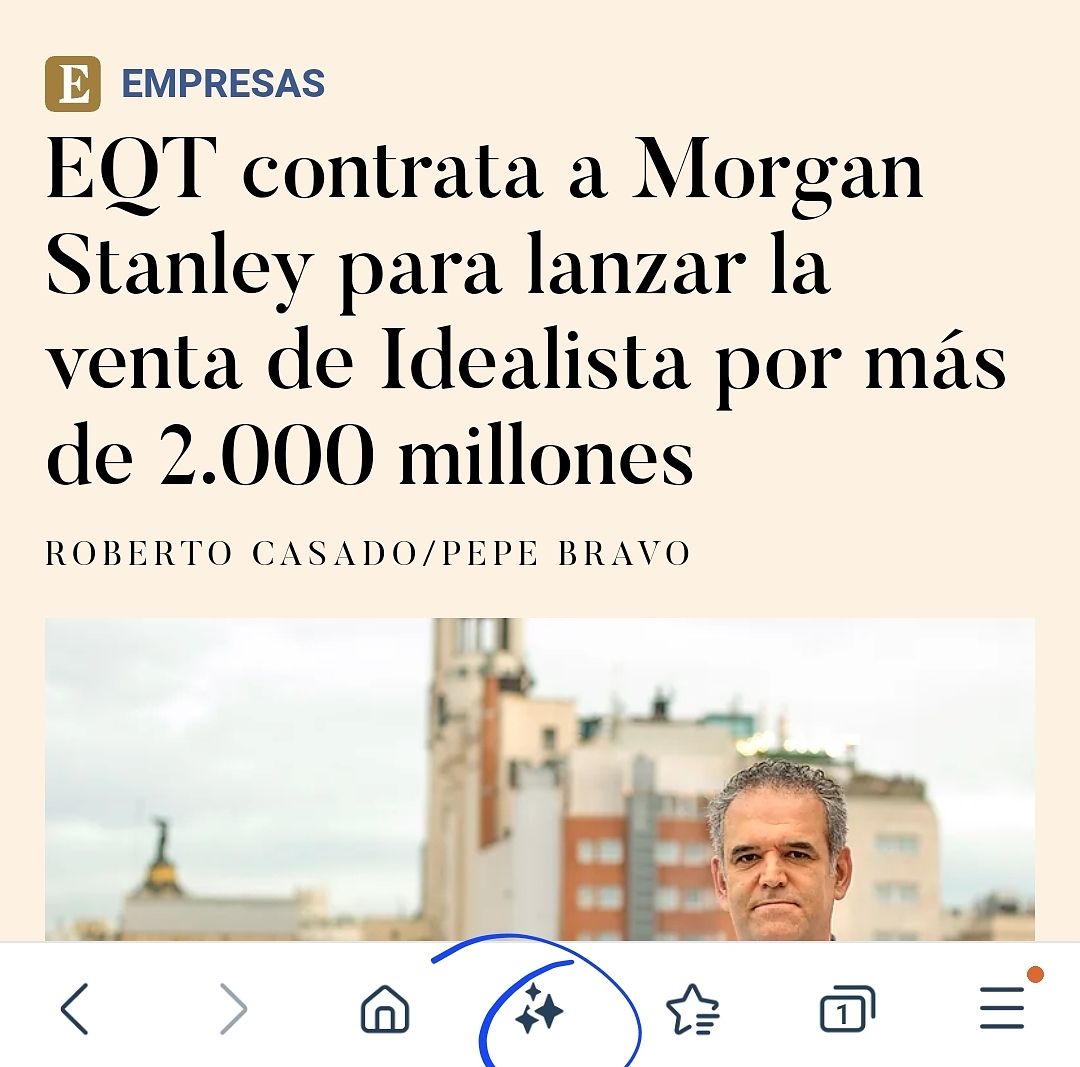After a whole year talking about generative artificial intelligence and its possibilities, 2024 began with the launch of the Samsung Galaxy S24 and a firm declaration of intentions from the Korean brand that all this AI reaches mobile phones.
For several days I have been testing the artificial intelligence of the Galaxy S24 Ultra, the top of the range of the new Samsung devices, especially to try to discover in what aspects of daily life the AI that is talked about so much is useful.
Meetings and video calls are common in jobs and specifically in mine, interviews for certain positions are very common. The fact that artificial intelligence allows you to record these interviews and then give you a summary with the most salient points is clearly a great help that takes away a lot of work time. But that in addition to recording the interviews, I also transcribe them into text and even summarize them, for me it is the best news of all.
But does it really work?
I have done several tests with this function in different situations. In the case of recording a single interlocutor and asking the Galaxy AI to transcribe the text, there is usually no problem.
If, for example, a recording is made in English and you ask for a transcription into Spanish, forget it. He makes a tremendous mess and tries to understand English as Spanish. That is, you have to ask the AI to transcribe in the language you have recorded in and then translate it.
In the case of a conversation with several speakers, such as an interview or a meeting, it is a matter of luck. If there are two people it is simpler and although there are some parts that are put in each other's mouths, it is unusual and works well. With more people I don't have much complaint either, but you can't trust it 100%.
In addition, all this transcription that is carried out in a matter of seconds can also be summarized in a few paragraphs and is another thing that does nothing wrong, highlighting highlights. Of course, the summary is rather long.
When the machine gets really messed up it is when mixing languages. I recorded an interview in Korean and English and asked for the transcription into English, so the entire speech, no matter what language was spoken, I understood like someone speaking English. It was the most difficult test and he still didn't do badly at all.
To identify the use of AI, Samsung has incorporated the icon of three little stars that often appear, as if browsing the Internet. In the navigation bar, right in the center, by clicking on these stars it is possible to summarize the website you are browsing or translate it
In the case of translation, it works very well, for example, to read news in other languages that you want to translate. When doing it with a website (I tried a travel website) there are parts that I couldn't translate, but it is a less common use and it was solved by trying to translate again.
For the summary, it is practical for example if a long text with terms of service appears, although the summary is equally difficult to read. In the case of summarizing websites, if it is news it is always better to read it in its entirety, but it can be very practical, for example if it is a study or report of a certain length, and if it has been previously translated, the summary will appear in Spanish.
These same little stars appear in other applications such as email or messaging services such as WhatsApp with the intention of translating messages, helping with style and spelling.
I have tried it with Google email and it is curious how it transforms a message by style, one that is more formal, more informal or intended for social networks. Quite useful. Like the spelling assistant, which never hurts.
Another action that is useful when browsing the web thanks to the collaboration between Google and Samsung is Circle to Search, a new visual search tool. It is as easy as pressing and holding the center button, which activates Google search, so that now you can also point to an object and thus easily locate it on the web.
I have used it on networks, for example to locate a garment that caught my attention, on websites, with locations, or in my own photos, and the result is a kind of Google Lens that quickly searches for similar results on Google. Of course, someone must have previously uploaded a similar image for it to find matches.
This is useful for locating some places, since it does it quite well, or I find it practical for clothes and even for decoration: you see something you like and Google is in charge of telling you where to buy it. But overall, it's not something I'm going to use frequently.
The fact of being able to call a person despite speaking two different languages and being able to talk to each other seems to me to be a great advance and a point in Samsung's favor. This system is easy to use, but you have to know in advance that you are going to call someone in another language to set it up and the other speaker will also receive a message to warn them that it is going to be translated.
Additionally, to use this tool you need an Internet connection, so this must be taken into account.
On the call, short sentences translate more or less well. The long or more complex ones, not so much. But with all this AI, it's a matter of use and improving the service, so for now it can perfectly save a simple conversation.
And of course, the photography section is another one that benefits from AI. As soon as you take a photo and click edit, the three famous little stars appear to make the job easier.
In this case, the AI's mission is basically to fill in the gaps left empty when rotating a photo or changing an element from one place to another or in size. Works? It depends. The filling of the images that are rotated has almost always surprised me for the better, while the filling done when moving an object is always more complex and sometimes does strange things, although other times it also surprises for the better.
For example, in this photo of the Golden Bridge, Samsung invents a good part of it, and does it in a very decent way.
Likewise, we are facing one of the best Android of the moment, if not the best, so the cameras by themselves also work very well without having to use AI (see this photo of the moon), which in my case has been something more occasional, especially for messing around.
Well, although there are functions that will surely improve over time, most of Samsung's proposals have a certain usefulness, which is very appreciated for day-to-day work. Worth? Yeah.
Likewise, the interesting thing will be to see how these tools that we currently find only in the top of the range of the Korean firm, begin to be used in cheaper phone launches, little by little democratizing this technology without having to pay more than 1,000 euros.

 B:SM will break its investment record this year with 62 million euros
B:SM will break its investment record this year with 62 million euros War in Ukraine: when kyiv attacks Russia with inflatable balloons loaded with explosives
War in Ukraine: when kyiv attacks Russia with inflatable balloons loaded with explosives United States: divided on the question of presidential immunity, the Supreme Court offers respite to Trump
United States: divided on the question of presidential immunity, the Supreme Court offers respite to Trump Maurizio Molinari: “the Scurati affair, a European injury”
Maurizio Molinari: “the Scurati affair, a European injury” First three cases of “native” cholera confirmed in Mayotte
First three cases of “native” cholera confirmed in Mayotte Meningitis: compulsory vaccination for babies will be extended in 2025
Meningitis: compulsory vaccination for babies will be extended in 2025 Spain is the country in the European Union with the most overqualified workers for their jobs
Spain is the country in the European Union with the most overqualified workers for their jobs Parvovirus alert, the “fifth disease” of children which has already caused the death of five babies in 2024
Parvovirus alert, the “fifth disease” of children which has already caused the death of five babies in 2024 Inflation rebounds in March in the United States, a few days before the Fed meeting
Inflation rebounds in March in the United States, a few days before the Fed meeting Video games: Blizzard cancels Blizzcon 2024, its annual high mass
Video games: Blizzard cancels Blizzcon 2024, its annual high mass Falling wings of the Moulin Rouge: who will pay for the repairs?
Falling wings of the Moulin Rouge: who will pay for the repairs? “You don’t sell a company like that”: Roland Lescure “annoyed” by the prospect of a sale of Biogaran
“You don’t sell a company like that”: Roland Lescure “annoyed” by the prospect of a sale of Biogaran Exhibition: in Deauville, Zao Wou-Ki, beauty in all things
Exhibition: in Deauville, Zao Wou-Ki, beauty in all things Dak’art, the most important biennial of African art, postponed due to lack of funding
Dak’art, the most important biennial of African art, postponed due to lack of funding In Deadpool and Wolverine, Ryan and Hugh Jackman explore the depths of the Marvel multiverse
In Deadpool and Wolverine, Ryan and Hugh Jackman explore the depths of the Marvel multiverse Tom Cruise returns to Paris for the filming of Mission Impossible 8
Tom Cruise returns to Paris for the filming of Mission Impossible 8 Skoda Kodiaq 2024: a 'beast' plug-in hybrid SUV
Skoda Kodiaq 2024: a 'beast' plug-in hybrid SUV Tesla launches a new Model Y with 600 km of autonomy at a "more accessible price"
Tesla launches a new Model Y with 600 km of autonomy at a "more accessible price" The 10 best-selling cars in March 2024 in Spain: sales fall due to Easter
The 10 best-selling cars in March 2024 in Spain: sales fall due to Easter A private jet company buys more than 100 flying cars
A private jet company buys more than 100 flying cars This is how housing prices have changed in Spain in the last decade
This is how housing prices have changed in Spain in the last decade The home mortgage firm drops 10% in January and interest soars to 3.46%
The home mortgage firm drops 10% in January and interest soars to 3.46% The jewel of the Rocío de Nagüeles urbanization: a dream villa in Marbella
The jewel of the Rocío de Nagüeles urbanization: a dream villa in Marbella Rental prices grow by 7.3% in February: where does it go up and where does it go down?
Rental prices grow by 7.3% in February: where does it go up and where does it go down? Even on a mission for NATO, the Charles-de-Gaulle remains under French control, Lecornu responds to Mélenchon
Even on a mission for NATO, the Charles-de-Gaulle remains under French control, Lecornu responds to Mélenchon “Deadly Europe”, “economic decline”, immigration… What to remember from Emmanuel Macron’s speech at the Sorbonne
“Deadly Europe”, “economic decline”, immigration… What to remember from Emmanuel Macron’s speech at the Sorbonne Sale of Biogaran: The Republicans write to Emmanuel Macron
Sale of Biogaran: The Republicans write to Emmanuel Macron Europeans: “All those who claim that we don’t need Europe are liars”, criticizes Bayrou
Europeans: “All those who claim that we don’t need Europe are liars”, criticizes Bayrou These French cities that will boycott the World Cup in Qatar
These French cities that will boycott the World Cup in Qatar Euroleague: at the end of the suspense, Monaco equalizes against Fenerbahçe
Euroleague: at the end of the suspense, Monaco equalizes against Fenerbahçe Women's Six Nations: Where to see and five things to know about France-England
Women's Six Nations: Where to see and five things to know about France-England Liverpool: it is confirmed, Slot will succeed Klopp on the Reds bench
Liverpool: it is confirmed, Slot will succeed Klopp on the Reds bench Ligue 1: Montpellier and Nantes back to back, two reds in stoppage time
Ligue 1: Montpellier and Nantes back to back, two reds in stoppage time


















